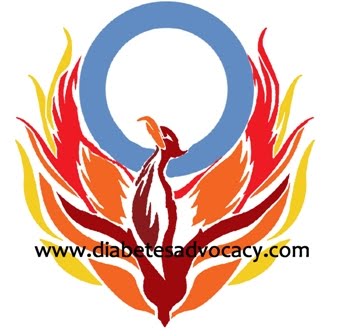Its a rainy, windy Halloween morning. One of my son's is curled up in his bed waiting for the power to return to his home and my youngest son is off to scare little children during Halloween events at school. Such is the life of family with teen aged boys.
At this point in our lives, Halloween is no longer about treats and goodies. We have begun to enjoy a few Halloween decorations and waiting to see what little ghosts and ghouls will arrive on our doorstep.
What to do about Halloween parties at school and big bags of Halloween candy are no longer issues in our house. Reading worries from parents of children who are relatively newly diagnosed made me think that perhaps a recap of some of the things that I learned over the years may not be a bad topic for today. So here we go....
1. Its okay to let him eat candy while he is out trick or treating. In fact, it should be encouraged (as long as usual Halloween safety rules are applied of course--Mom/Dad checks candy or it is from the home of a good family friend). All of the walking, running and general excitement would always drop my son's bg levels. Letting him eat bars, rockets (Smarties for my US friends) and other treats was a fun way to keep him in range and allow him to be a "normal" child.
2. Snack sized Halloween treats are fabulous for lows. Chocolate bars work for those evening lows that aren't lows yet but will be and a slow release of glucose would be ideal. Rockets and Starburst are great for keeping in your pocket or purse for those lows that need immediate sugar and your child thinks that they have one the little kid lottery!
3. Snack sized treats are often equivalent to one fruit for anyone who may still use and exchange system and what child will not exchange a fruit for a bar? Well, my kids but they are weird!
4. Snack sized chips are often equal to a slice of bread. Again, for those on the exchange system, you can skip a slice of toast or a potato and switch in a bag of chips for the day as a special treat.
5. Mom and Dad will eat the bulk of the candy. My children had candy that would last until Easter and beyond. Parents would gain weight while the children carefully savored each morsel.
6. For those who have kids who will either not eat the candy or would overindulge, many parent exchange the treats through an Easter Witch or Great Pumpkin. The treats are left out and gift cards or trinkets are delivered in exchange for the treats. I have also heard of treats being packed up and given to homeless shelters or hospitals.
7. No matter how old your child is, he/she will most likely still want some of those treats. The carb counts are now on most candies and for those that are not, there are many great resources that provide the counts on many other items so that your child does not "have" to go without on Halloween.
Halloween was a great time for my boys. We drove all over the neighbourhood, met up with pals and had fun racing across lawns and warming up in cars. Diabetes did not change this for them. It meant that we brought a meter on our adventure. Insulin was nearby but not always required. Basal rates were often dropped later that evening. Sandwiches were packed but usually exchanged for hot dogs or chips for just this night. Juice boxes were a bonus when given out at the door as they added extra glucose to get to the next house.
This year my youngest son will be greeting the little ghouls and handing out treats. He will be counting each child and hoping that we will have more treats than children so that he can enjoy a few bars for himself. He has great memories of Halloweens past and to me that is a sign of successful diabetes management.



No comments:
Post a Comment